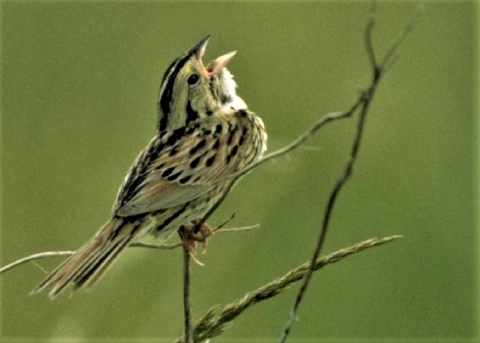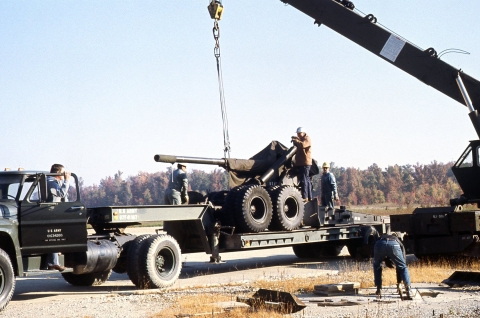About Us
Big Oaks National Wildlife Refuge encompasses 50,000 acres in Jefferson, Jennings and Ripley counties. The refuge covers a portion of the former Jefferson Proving Ground, a munitions testing facility operated by the U.S. Army between 1940-1995. In 1996, the U.S. Fish and Wildlife Service began managing the wildlife resources of the proving ground. Big Oaks National Wildlife Refuge was established in June 2000 as an "overlay" national wildlife refuge national wildlife refuge
A national wildlife refuge is typically a contiguous area of land and water managed by the U.S. Fish and Wildlife Service for the conservation and, where appropriate, restoration of fish, wildlife and plant resources and their habitats for the benefit of present and future generations of Americans.
Learn more about national wildlife refuge and now operates under a 99-year real estate permit from the Army. The Indiana Air National Guard still operates an air-to-ground bombing range on 1,033 acres of the former proving ground and this property is surrounded by, but not part of, the refuge.
The refuge is designated as a Globally Important Bird Area and contains many rare species of plants and animals in the wetlands, grasslands, shrublands and forest. The refuge hosts one of the world's largest populations of Henslow's sparrows with over 500 pairs nesting on the refuge. There are at least 32 caves found on the property that provide habitat for rare invertebrate species. The wet flatwoods forests of the refuge shelter rare salamanders and several endangered bats during the warm months of the year. Some significant historic buildings and stone bridges are present on the refuge along with the a 165 acre lake (Old Timbers Lake).
Our Mission
The mission of the National Wildlife Refuge System is to administer a national network of lands and waters for the conservation, management and, where appropriate, restoration of the fish, wildlife and plant resources and their habitats within the United States for the benefit of present and future generations of Americans.
The purpose of Big Oaks National Wildlife Refuge is the development, advancement, management, conservation and protection of fish and wildlife resources. Our objective is also to conserve fish, wildlife and plants, including those which are listed as endangered or threatened.
Every national wildlife refuge national wildlife refuge
A national wildlife refuge is typically a contiguous area of land and water managed by the U.S. Fish and Wildlife Service for the conservation and, where appropriate, restoration of fish, wildlife and plant resources and their habitats for the benefit of present and future generations of Americans.
Learn more about national wildlife refuge was created for a special purpose. Some were created to protect migratory birds, others to protect threatened or endangered species or unique habitats, while others fulfill another special purpose. All activities allowed on refuges are evaluated periodically to make sure each activity will not conflict with the reason the refuge was established.
Our History
1940 - Jefferson Proving Ground was established by the Department of Defense as an ordnance testing facility.
1995 - Jefferson Proving Ground was closed.
1996 - The U.S. Fish and Wildlife Service started managing the wildlife resources through an agreement with the U.S. Army.
June 2000 - Big Oaks Refuge was established as an “overlay” national wildlife refuge national wildlife refuge
A national wildlife refuge is typically a contiguous area of land and water managed by the U.S. Fish and Wildlife Service for the conservation and, where appropriate, restoration of fish, wildlife and plant resources and their habitats for the benefit of present and future generations of Americans.
Learn more about national wildlife refuge through an initial 25-year real estate permit from the U.S. Army.
2021 - The Memorandum of Agreement with the Army and Air Force was renegotiated and the refuge will now receive a 99-year permit.
Other Facilities in this Complex
Big Oaks and Muscatatuck National Wildlife Refuge are complexed to share staff and equipment to efficiently manage both refuges.




